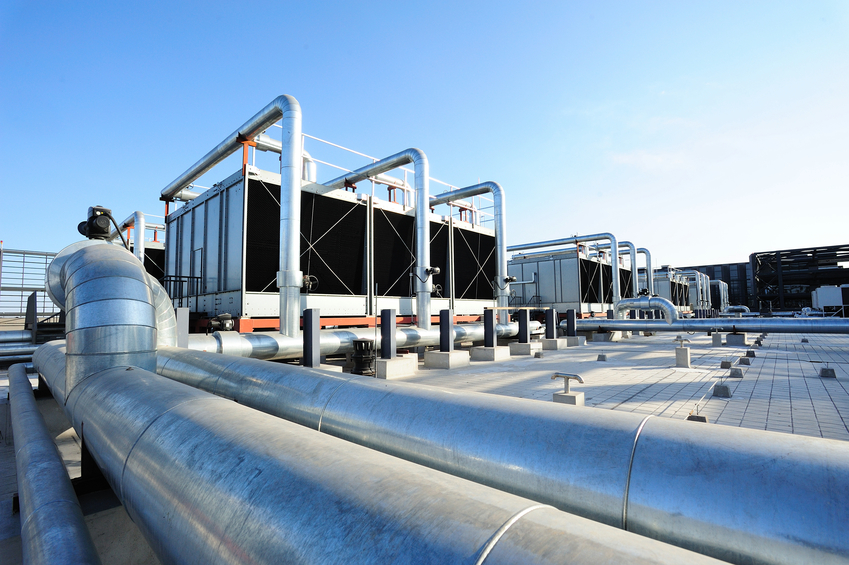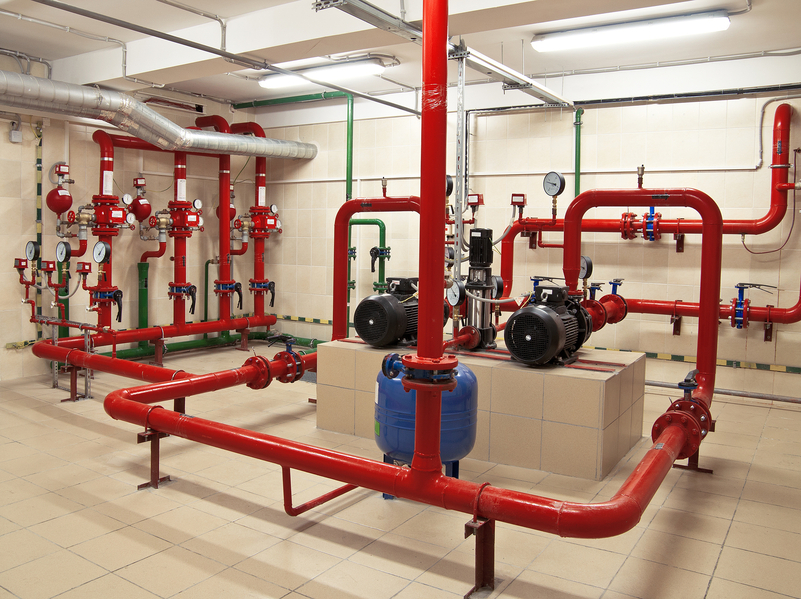Saskatchewan Mechanical 30 PDH Discount Package 2
Courses in this Package
Diesel Engine Fundamentals (M04-002)
An Introduction to Basic Mechanical Components (M03-043)
Cooling Towers (M07-001)
An Introduction to Water Distribution System Appurtenances (M03-033)
Water Efficiency Management Guide for Bathroom Suites (M01-019)
Heat Tracing Systems (E04-019)
Overview, Installation and Maintenance of Pumps, Valves and Piping (M07-004)
General Principals of Engineering Ethics for Saskatchewan Professional Engineers (SK1-001)

This online engineering PDH course provides guidance on the basic operating principles of 2-cycle and 4-cycle diesel engines. It explains the fundamentals and theory of operation of engine governors, fuel ejectors, camshafts as well as typical engine protective features.
Today most facilities require some type of prime mover to supply mechanical power for pumping, electrical power generation, operation of heavy equipment, and to act as a backup electrical generator for emergency use during the loss of the normal power source. Although several types of prime movers are available (such as gasoline engines, steam and gas turbines), the diesel engine is the most commonly used. Diesel engines provide a self-reliant energy source that is available in sizes from a few horsepower to 10,000 hp. Relatively speaking, diesel engines are small, inexpensive, powerful, fuel efficient, and extremely reliable if maintained properly.
This 4 PDH online course is applicable to mechanical engineers, plant operators, maintenance personnel, and technical staff who are interested in gaining a better understanding of diesel engine fundamentals.
This P.Eng. continuing education course is intended to provide you with the following specific knowledge and skills:
- Learning the different types of diesel engines
- Learning the major components and support systems of a diesel engine
- Understanding the basic diesel cycles (two-stroke and four-stroke)
- Understanding the operation of diesel engine speed and fuel controls
- Understanding the maintenance and protection methods of diesel engines
In this professional engineering CEU course, you need to review Module 1, "Diesel Engine Fundamentals" of the Department of Energy Publication DOE-HDBK-1018/1-93, "Mechanical Science".
Upon successful completion of the quiz, print your Certificate of Completion instantly. (Note: if you are paying by check or money order, you will be able to print it after we receive your payment.) For your convenience, we will also email it to you. Please note that you can log in to your account at any time to access and print your Certificate of Completion.

This online engineering PDH course provides an overview of the purpose, types and operation of several basic mechanical components.
These components which include air compressors, boilers, cooling towers, steam traps, filters and strainers; are found at the heart of many plants and have widespread applications in several industries.
This 3 PDH online course is applicable to mechanical and industrial engineers, operators, maintenance personnel, and other technical staff who are interested in gaining a better understanding of the operation of the different mechanical equipment.
This P.Eng. continuing education course is intended to provide you with the following specific knowledge and skills:
- Understanding the various types of air compressors, operation and safety hazards
- Familiarizing with boilers
- Learning the purpose of the cooling tower and its various types
- Learning the fundamentals of steam traps and their different types
- Distinguishing between filters and strainers and learning their different types
Upon successful completion of the quiz, print your Certificate of Completion instantly. (Note: if you are paying by check or money order, you will be able to print it after we receive your payment.) For your convenience, we will also email it to you. Please note that you can log in to your account at any time to access and print your Certificate of Completion.

This online engineering PDH course provides comprehensive information on cooling water systems and describes different types of cooling towers, their mechanical components and the problems associated with cooling water.
A cooling tower is a device used in industry to cool hot water (by partial evaporation) before reusing it as a coolant. Water directly contacts surrounding air and a very small part (1-2%) evaporate. This evaporation increases the air temperature and humidity and decreases the temperature of the water making it possible to cool below the normal air temperature. Although this heat is usually transferred to a cool, flowing volume of water, final rejection is always to the atmosphere and, invariably, is accomplished by some form of heat exchanger.
The machines and processes of industry, as well as the air-conditioning systems for buildings generate tremendous amounts of heat, which must be continuously, dissipated if these machines and processes are to continue to operate efficiency. Water cooling is the most efficient method of dissipating heat.
This 7 PDH online course is applicable to mechanical engineers, design and construction personnel, technical staff and facility personnel who are interested in gaining a better understanding of cooling towers.
This P.Eng. continuing education course is intended to provide you with the following specific knowledge and skills:
- Learn different types of heat rejection systems
- Learn the operational theory and principles of evaporative cooling tower
- Describe the factors affecting the performance of cooling tower
- Learn the various materials used in construction of cooling tower
- Understand the functions of various components of cooling tower
- Describe various control options
- Understand the layout and installation considerations
- Understand the water distribution mechanisms, noise and vibration issues
- Understand the cooling tower water balance
- Learn the importance of cooling water treatment
- Describe the cooling tower testing requirements, various codes and standards
- Learn by examples the equations to calculate the evaporation rate, fresh water make up and blowdown requirements
In this professional engineering CEU course, you need to review the document titled "Cooling Towers".
Upon successful completion of the quiz, print your Certificate of Completion instantly. (Note: if you are paying by check or money order, you will be able to print it after we receive your payment.) For your convenience, we will also email it to you. Please note that you can log in to your account at any time to access and print your Certificate of Completion.

This online engineering PDH course provides guidance for the operation and maintenance of various types of water distribution system appurtenances. Discussed herein are valves and hydrants; flow, pressure and level sensors; transmission systems; indicators, registers and recorders; water meters, weirs and flumes; and backflow devices.
This 3 PDH online course is intended for civil engineers and other design and construction professionals seeking an introduction to best practices for the operation and maintenance of water distribution system appurtenances.
This P.Eng. continuing education course is intended to provide you with the following specific knowledge and skills:
-
Learning about the recommended operation and maintenance procedures and schedules for valves and fire hydrants
-
Learning about the recommended operation and maintenance procedures and schedules for flow, pressure and level sensors
-
Learning about the recommended operation and maintenance procedures and schedules for data transmission systems
-
Learning about the recommended operation and maintenance procedures and schedules for flow indicators, registers and recorders
-
Learning about the recommended operation and maintenance procedures and schedules for water meters and other flow measuring devices
-
Learning about the recommended operation and maintenance procedures and schedules for cross-connection control devices
-
Learning about the inspection procedures of backflow devices
In this professional engineering CEU course, you need to review the course document titled, "An Introduction to Water Distribution System Appurtenances".
Upon successful completion of the quiz, print your Certificate of Completion instantly. (Note: if you are paying by check or money order, you will be able to print it after we receive your payment.) For your convenience, we will also email it to you. Please note that you can log in to your account at any time to access and print your Certificate of Completion.

This online engineering PDH course provides basic information on how to improve water management, reduce property water use, and subsequently improve EPA Water Score.
Bathrooms offer a clear opportunity for properties to save significant amounts of water. Use of toilets, faucets, showerheads, and other sanitary fixtures in the bathroom suite typically represent a significant percentage of water use in properties. Replacing bathroom fixtures with water-efficient products, and WaterSense labeled products when applicable, can provide the most significant opportunity for water and energy savings, particularly in older buildings with inefficient fixtures.
This 1 PDH online course is applicable to mechanical and sustainability engineers, as well as other technical personnel who are interested in improving water management and minimizing wastewater.
This P.Eng. continuing education course is intended to provide you with the following specific knowledge and skills:
- Knowing the background and importance of water management for bathrooms
- Familiarizing with bathroom maintenance best management practices
- Understanding water savings calculations for toilets, bathroom sink faucets, bath and shower diverters, and showerheads
- Knowing the replacement options when installing new toilet fixtures or replacing old, inefficient products
Upon successful completion of the quiz, print your Certificate of Completion instantly. (Note: if you are paying by check or money order, you will be able to print it after we receive your payment.) For your convenience, we will also email it to you. Please note that you can log in to your account at any time to access and print your Certificate of Completion.

This online engineering PDH course provides guidance on heat tracing, its different types (electric, steam, hot water), and its advantages and limitations.
The term heat-tracing refers to the continuous or intermittent application of heating pipelines, tanks, vessels or other equipment used for storage or transportation of a product (liquid, powder or gas). The purpose of heat tracing is to compensate or make up for the heat loss to the surrounding atmosphere in low ambient temperature climates. Some applications for heat tracing include; preventing fluid from freezing, maintaining process fluids at pumpable viscosities, preventing formation of hydrates and waxes in hydrocarbon liquids (oil, etc), and also sometimes to preheat part of a fluid system prior to initial startup or after a primary heating system shutdown.
The heat tracing is generally accomplished by employing electric or steam tracing and insulating both the process fluid pipe and the tracer together, using appropriate insulation materials and metal lagging. The decision between electric and steam heat tracing depends on various factors and this course outlines the pros and cons of both the methods.
This 4 PDH online course is applicable to process, mechanical and electrical engineers, operations & maintenance personnel, as well as consultants and contractors who construct, build and manage facilities involving heat tracing systems.
This P.Eng. continuing education course is intended to provide you with the following specific knowledge and skills:
- Understanding what is heat tracing and where it is used
- Understanding the different types of heat tracing systems: electric, steam, hot water
- Understanding the advantages and limitations of constant watt, parallel circuit, self regulating and skin type heating
- Learning the control techniques: ambient air sensing or line control for optimum energy efficiency
- Understanding the power supply, protection and safety devices
- Learning about the various codes and standards governing the design and installation of electric heat tracing
- Understanding three types of steam heat tracing systems: external tube tracers, cemented tracers and fully jacketed pipe
- Understanding the do's and don'ts of steam tracing
- Learning step-by-step approach for estimating the heat loss and selection of an electric heat tracing system
- Learning the key factors affecting the selection of heat tracing systems
- Learning the factors favoring and against the application of electric and steam heat tracing systems
In this professional engineering CEU course, you need to review the course document titled "Heat Tracing Systems".
Upon successful completion of the quiz, print your Certificate of Completion instantly. (Note: if you are paying by check or money order, you will be able to print it after we receive your payment.) For your convenience, we will also email it to you. Please note that you can log in to your account at any time to access and print your Certificate of Completion.

This online engineering PDH course covers the basic operating principles of pumps, discusses their different types, and explains their installation and maintenance methodologies. This course also presents the auxiliary components such as the different types of valves, piping and other accessories typically used in pump systems.
A pump is a device that uses an external source of power to force the fluid to move from one place to another. A pump develops no energy of its own; it merely transforms energy from the external source, such as a gasoline or electric motor, into mechanical kinetic energy, which is manifested by the motion of the fluid.
A valve is any device used to control fluids in a closed system, and is typed or classified according to its use in a system. This course will discuss valve construction and the most common types of valves used in the industry.
The control and application of fluid power would be impossible without a suitable means of conveying the fluid from the power source to the point of application. Fluid lines used for this purpose are called piping. They must be designed and installed with the same care applicable to other components of the system. To obtain this desired result, attention must be given to the various types, materials, and sizes of lines available for the fluid power system.
This 7 PDH online course is intended for mechanical engineers as well as others who are interested in gaining general knowledge of pumps, valves, and pipes in fluid systems.
This P.Eng. continuing education course is intended to provide you with the following specific knowledge and skills:
- Understanding the principles of pump operation
- Familiarizing with the different types of pumps
- Learning about the basic types and functions of valves, steam traps, and strainers
- Knowing the different types of filters
- Familiarizing with piping, tubing and their associated fittings
- Familiarizing with the different types of packing and gasket material
Upon successful completion of the quiz, print your Certificate of Completion instantly. (Note: if you are paying by check or money order, you will be able to print it after we receive your payment.) For your convenience, we will also email it to you. Please note that you can log in to your account at any time to access and print your Certificate of Completion.

This online engineering PDH ethics course is (1) the study of moral issues and decisions confronting individuals and organizations involved in engineering and (2) the study of related questions about moral conduct, character, ideals and relationships of peoples and organizations involved in technological development (Martin and Schinzinger, Ethics in Engineering).
This course will address the principles of engineering ethics that every engineer is expected to live by when practicing their profession. It will also present unique ethical case studies randomly selected to demonstrate ethical challenges for professional engineers and alternatives to address these challenges.
This 1 PDH online course is applicable to Professional Engineers licensed in the Province of Saskatchewan and who are required to demonstrate continuing professional competency in engineering ethics as a condition of their license renewal. For each renewal period, every licensee must complete at least one (1) professional development hour relative to the principals of professional responsibility, conduct and ethics.
This P.Eng. continuing education course is intended to provide you with the following specific knowledge and skills:
- Understanding the definition of engineering ethics
- Learning how to hold the utmost safety, health, and welfare of the public when practicing your profession
- Familiarizing with the conditions to issue public statements
- Gaining a general overview on how to represent each employer or client as a faithful trustee
- Learning how to build your professional reputation on the merit of your services
- Understanding professional ethical practices through presenting realistic case studies
- Learning how to handle proprietary information and intellectual property rights
Upon successful completion of the quiz, print your Certificate of Completion instantly. (Note: if you are paying by check or money order, you will be able to print it after we receive your payment.) For your convenience, we will also email it to you. Please note that you can log in to your account at any time to access and print your Certificate of Completion.